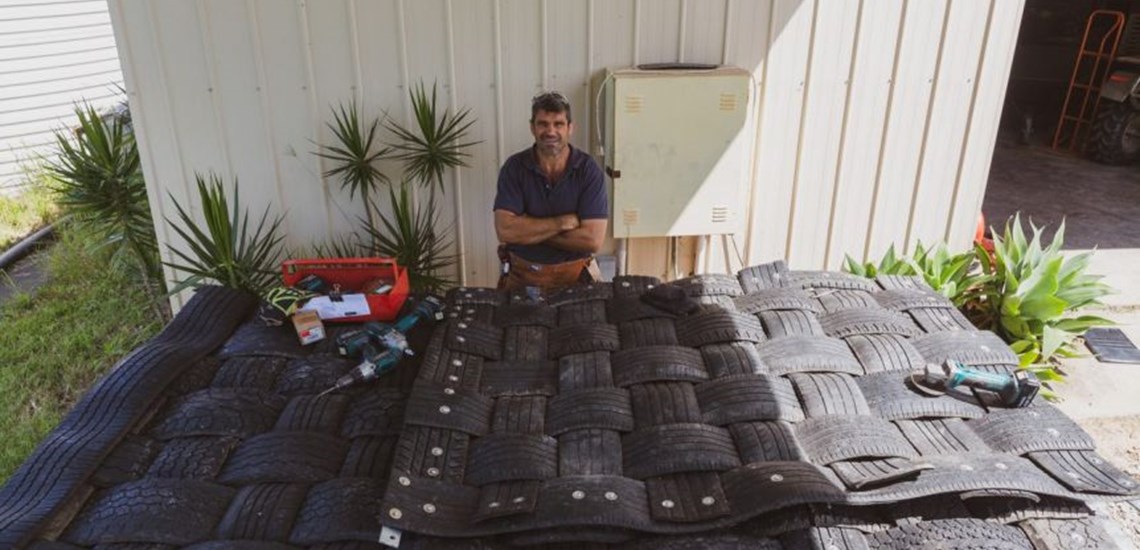The tyre recycling sector has become very much focused on high tech solutions, or capital heavy investment as a route to resolving waste tyre issues. Sometimes a simple solution can offer some effective first step recycling.
Australian Developer Weaves Tyre Mats from Car Tyres
Cattle mats are often made from processed tyre granulate bound with elastomers, and these mats do have a place in the market, and in some places have been used as matting in industrial situations to relieve physical stress on the workforce.
However, in Australia, where the country is facing an export ban on waste tyres, there is a drive to develop new uses for old tyres.
Owen Henry was working for a company that sold American-made recycled tyre mats to stop cattle slipping in feedlots when he questioned why the product was imported?
“I looked down and I saw old woven tyre mats and I thought why are we bringing someone else’s problems into Australia?” Henry said.
“I started speaking to a couple of producers and they said the mats are brilliant, they just stop the cattle slipping, and they reduce fatalities, and I thought, ‘well, I’ll have a crack at it’.”
Initially, the process was carried out manually, using an angle grinder. However, when there was a proven market, Henry attracted funding from Tyre Stewardship Australia, which helped him purchase a tyre wall cutter that enabled him to safely cut the treads off the tyres for weaving into cattle mats. The sidewalls can be used for silage clamps or can be further recycled by additional processes.
The woven tyre tread mats were fastened with steel studs and anchored to the ground in high traffic areas for livestock.
“Out the front of a crush they’re brilliant. Loading ramps, anywhere cattle are encountering slippery surfaces,” Henry said.
Each square metre of Owen Henry’s Taurus mats used 19 tyre treads.
Henry has trialled them under feed bins in cattle yards and said his Australian-made Taurus mats were more affordable than the American version.
“We’re $20-a-metre cheaper and you don’t have to pay for freight and deal with freight issues. So, it’s a lot better for people in Australia,” Henry said.


















